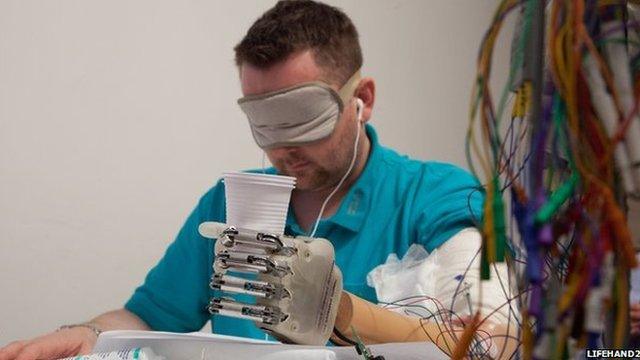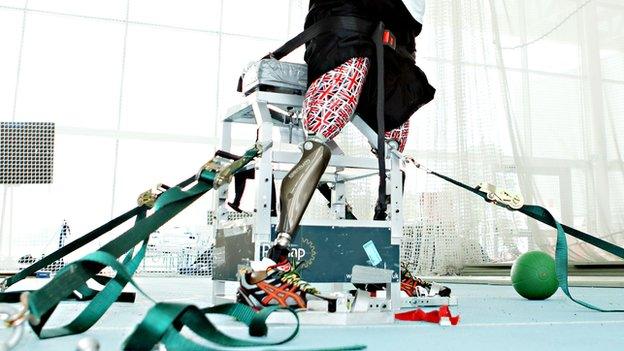Who determines a foot's worth?
- Published

Service members who lose limbs receive significant training, therapy and prosthetics
The US and UK offer compensation to veterans for the loss of limbs and for other serious injuries during wartime. How are those rates determined?
Military service members injured in the line of duty receive medical care, physical therapy, and the necessary prosthetics. And once they leave the service, they also receive payment. While all injured veterans are eligible for certain compensations, US veterans who are severely wounded also receive an additional special monthly compensation, external payment.
According to a rough example calculated by the Washington Post, external (which has not yet been verified by the US Veteran's Administration), those payments run from $100 (£59) for the loss of a hand or deafness in both ears to more than $5,000 for veterans who require "advanced levels of aid and attendance".
But just how are these rates determined? It's complicated, says Meagan Lutz, a public affairs specialist with the Veteran's Administration. While the exact rates require some serious maths, the basic premise is that compensation is based on an estimated average of how much less money an injured veteran would earn than if he or she had been in good health. Payments can increase depending on the size of the service member's family. The severity of a veteran's injury is rated on a sliding scale.
In the UK, according to the Armed Forces Compensation scheme,, external wounded veterans are given one lump sum according to the severity of their injury. Injuries are graded on a tariff scheme of 1-15, with 1 being the most severe (loss of both legs or both arms), with a maximum payment of £570,000 ($959,652) and 15 being the least (minor scarring of scalp, neck, torso or limbs), with a maximum payout of £1,200.
The tariff levels are "set along the lines of the civil courts in negligence cases and the Criminal Injuries Compensation Scheme in the UK," according to the 2010 review of the Annual Compensation Scheme, external.
Depending on the number and location of the injuries - an injury rated 1-4 gets 100% of the "relevant amount for all injuries", as do two or more injuries rated a 5 or 6. In the case of multiple injuries, tariffs may be combined, with some given as a percentage of the full value.
Which injury gets what designation comes from recommendations by the Independent Medical Expert Group, external, which periodically revisits and and reorganises the scheme.
- Published5 February 2014

- Published19 February 2013
